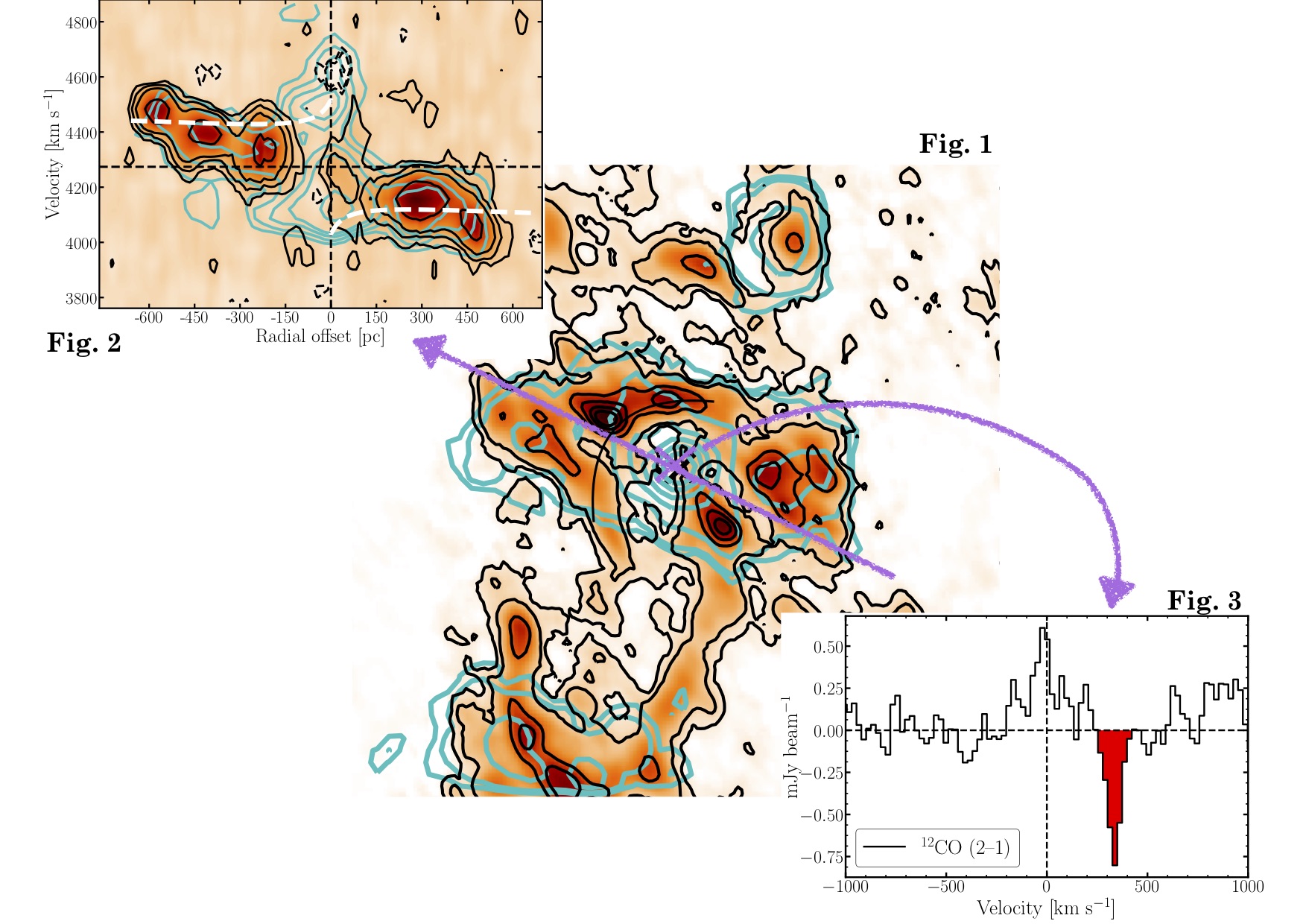Daily Image
26-01-2018ALMA observations of AGN fuelling: the case of PKS B1718-649
| Submitter: | Filippo Maccagni, Raffaella Morganti, Tom Oosterloo |
| Description: | Active Galactic Nuclei (AGN) are powered by the accretion of material onto the supermassive black hole in the centre of a galaxy. Finding direct evidence of this accretion has proven to be a particularly difficult task and has been successful only for very few sources. One of the best candidates to study this mechanism is the baby radio source PKS B1718-649, an AGN only 100 years old. A few years ago, we observed the atomic hydrogen in this galaxy (Daily Image 10 September 2014) as well as the warm molecular hydrogen (Daily Image 29 March 2016), both of which revealed signs of accretion occurring in the object. We have now made the next step, using ALMA observations of this source, which allowed us to trace the cold molecular gas (using carbon monoxide, CO), with unprecedented spatial resolution, on large scales but also down to the very centre of the galaxy, less than 100 light-years from the black hole. We found that on large scales (a thousand light-years), the gas is distributed in a circumnuclear disk (Fig.1, black contours). The position-velocity diagram taken along the major axis of this disk (Fig. 2) shows that the disk is regularly rotating, and the predicted rotation curve (white dashed contours) fits the kinematics of the molecular gas very well (solid contours). Against the compact radio emission (only 6 light-years in size!), we detect CO gas in absorption (dashed black contours in Fig. 2). The key thing is that this absorbing gas does not follow the regular rotation of the disk, and is moving towards the black hole with a velocity of more than 300 km s-1. This is very likely a clear and direct detection of gas feeding the activity of the black hole. Interestingly, gas with similar in-falling velocities was also found in the earlier observations of the warm molecular (cyan contours in Fig. 1 and 2). The combination of these studies is telling us that clouds with gas in different conditions (warm and cold) must be present close to the black hole (r < 200 light-years). The data also show that the physical conditions of these in-falling clouds are different from those of the gas in the larger disk, suggesting the nuclear activity changes the physical conditions of the surrounding medium. These ALMA observations of PKS 1718-649 provide one of the best indications a population of cold clouds is falling towards a radio AGN, likely fuelling its activity. These results are presented by F.M. Maccagni, R. Morganti, T.A. Oosterloo, J.B.R. Oonk, and B.H.C. Emonts in a recently accepted A&A paper |
| Copyright: | ASTRON |
| Tweet |  |
